A special invitation to be among the first Americans to reserve your own supply of extreme altitude wine found only in the remote foothills of the Andes Mountains
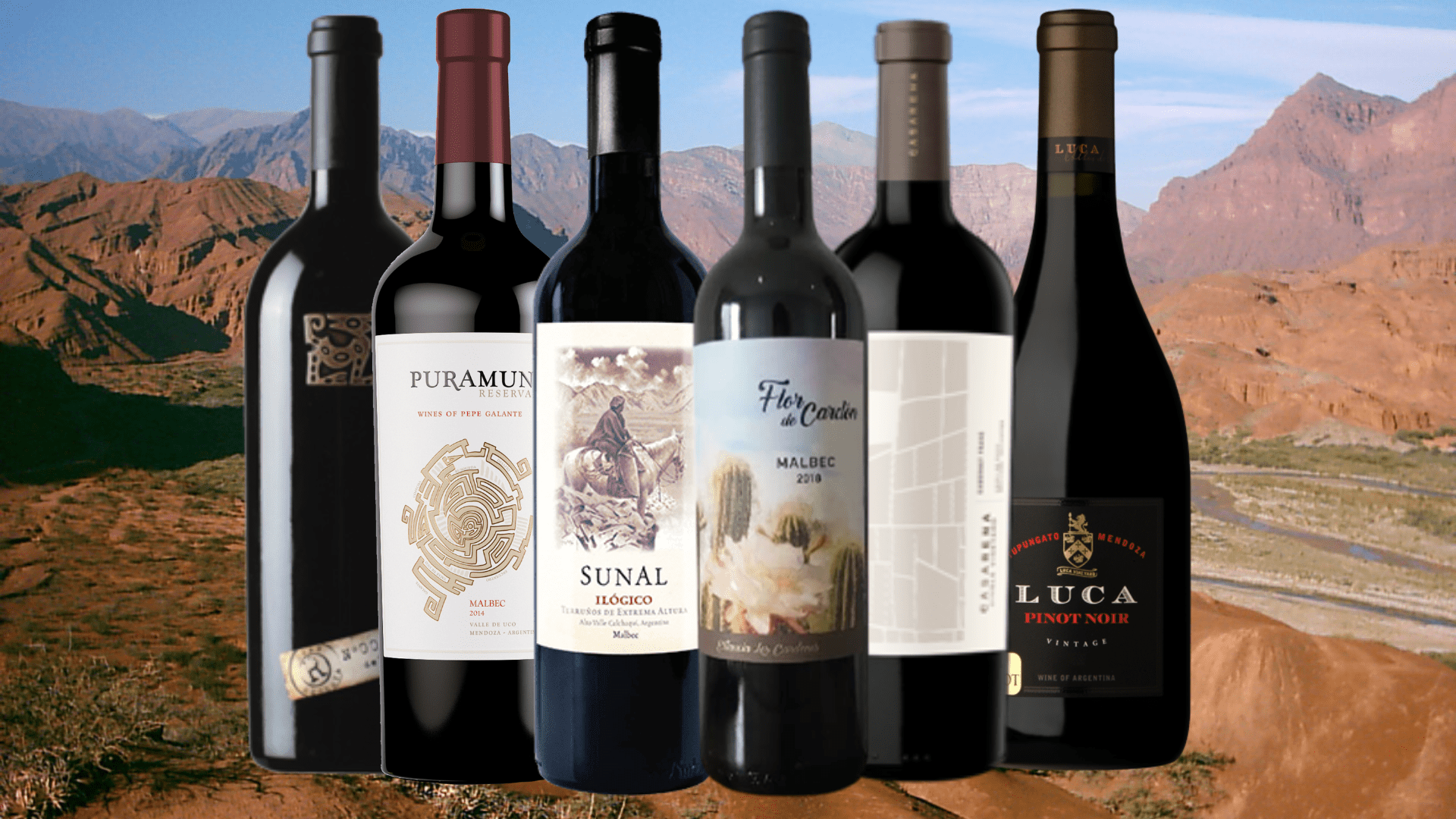
“Way out at what felt like the end of the earth, I found families that had been making wine for 200 years… critics rave about this wine… but up until now it’s been impossible to find here in America.”
– Will Bonner, Founder, Bonner Private Wine Partnership
When people hear that I run the only private wine partnership in America, they assume I sit around in Napa tasting the latest ultra-smooth (and overpriced) cabernet sauvignon…
…or that I’m always jetting off to France to taste the latest 100 point St Emilion (which, surprise!… tastes the same as the 89 pt St Emilion!)…
They don’t expect to hear about the time our truck overheated on a single-lane mountain road with fog so thick you could barely see ten feet in front of you…
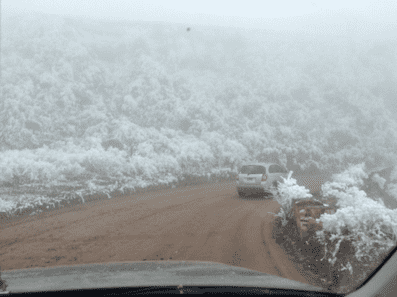
…or the number of times I’ve been kicked, trampled, and bucked off by horses…
…or the amount of strange meat cooked over an open fire I’ve eaten… or the even stranger dinner companions I’ve had (from guys who own private planes…to cowboys who have never even seen one up close)
In my weakest moments… say, when I’m trapped in a flashflood at night in the middle of the desert…
…well, in those moments I do sometimes wonder why I’m in this business at all.
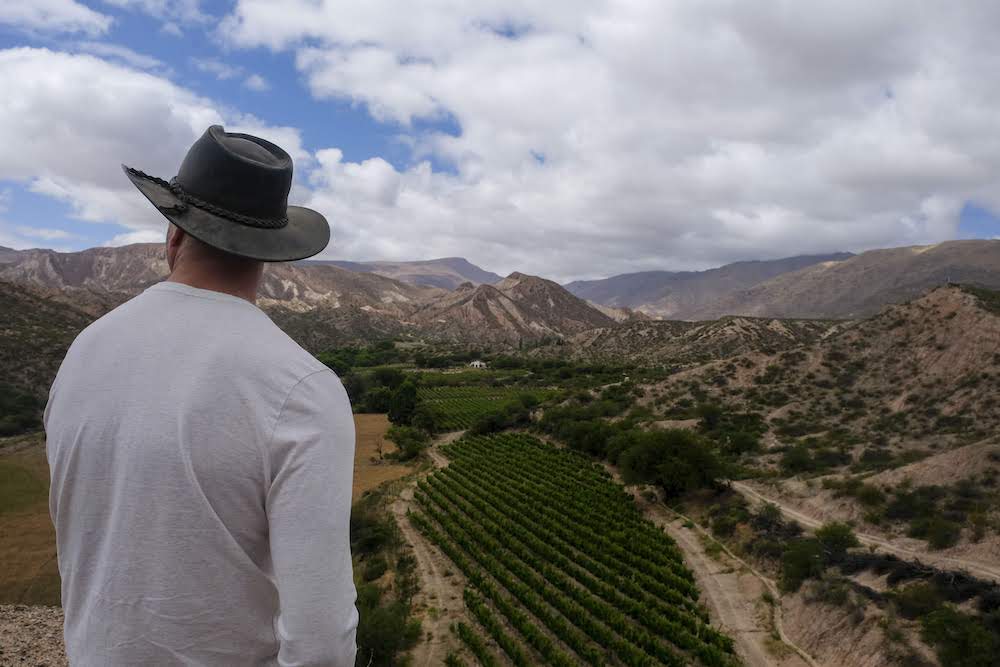
After all it, would be far easier to buy a few thousand gallons of bulk juice from the California Central Valley (or southern Australia), mix in some oak extract and “mega-purple” dye, then slap a ‘cool’ label on it.
(Very common in the mass market wine world… especially in most so-called ‘wine clubs’… and that’s not the half of it… more on that in a moment…)
Of course, the members of my private wine partnership would never go for that.
Not that we’re wine snobs…
…we’re just a group of Americans who got tired of those flimsy wines you find at most supermarkets – you know the kind… the cheap throat-burning reds…the syrupy yellow whites…
The mass market wine industry’s best-held secret is just how similar their process has become to manufacturing at a soda pop plant… or worse, an oil refinery.
First, the vineyards aren’t your traditional old world vineyards… there are no gnarled fruit trees offering shade to the old vigneron as he carefully prunes his vines… tasting a grape every few minutes to see how they’re coming along…
These industrial vineyards stretch out for acres and acres… planted in rows wide enough for giant pesticide sprayers and machine harvesters to pass through…
Like a chicken farm, the operators take no chances when it comes to their profit margin.
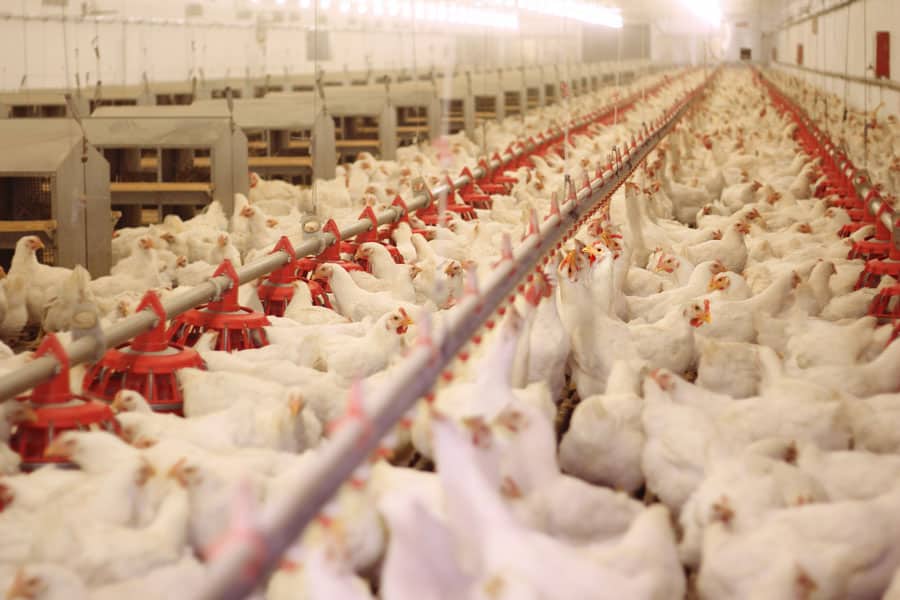
Is this the new reality of modern wine making?
The grapes are often overwatered to artificially fatten them up (more juice = more money).
At the first hint of bad weather, they harvest the grapes still green… and later cover it up by adding more sugar during fermentation.
(A lot of those popular wines from California and Australia you find on kitchen counters are notoriously sugary – even if they cleverly use acids and tannins to hide the sweet taste)
In mass market vineyards, machine harvesters aren’t precise enough to grab only grapes… so the resulting juice also contains bits of twigs, leaves, dirt, and even insects.
So they run the wines through a centrifuge… then a micropore filter which completes the job of removing any trace of sediment…
It’s a sterile, safe way to make wine… but the sediment is precisely what contains those special aromas, unique to each vineyard, that we all seek in our wine…
And by the way, I’m far from the only one saying this:
As famous wine importer and best-selling author Kermit Lynch says:
“Only in this century have we seen the hard-earned knowledge of the ancients discarded, almost overnight, in the name of progress…
“[Winemakers] feel secure with a sterile wine. I say if it is sterile is not alive.”
Or, as famous wine critic Robert Parker puts it:
“Anyone who tells you that excessive…filtration does not damage wine is either a fool or a liar.”
(Especially true for Pinot Noirs and Chardonnays… they get destroyed by this)
There’s a reason that modern wineries look more like oil refineries than the old “chateaux” behind legendary wines like Lafite or LaTour…
…Modern industrial winemaking is all about meeting ever growing demand…any which way you can…
When they can’t afford oak barrels… they used oak “flavoring” and other additives
When the wine isn’t dark enough… they add purple dye called “Mega Purple” (far more common than you think)
When the wine comes out cloudy with sediment from the soil and air… they use “fining agents” like potassium ferrocyanide (yes “-cyanide”)
When the aroma’s not “big” enough… they add enzymes
When it’s too flimsy or sugary… they add acids (which destroy any subtlety in flavor)
And that’s not including the chemicals that find their way into wine from the industrial growing process…
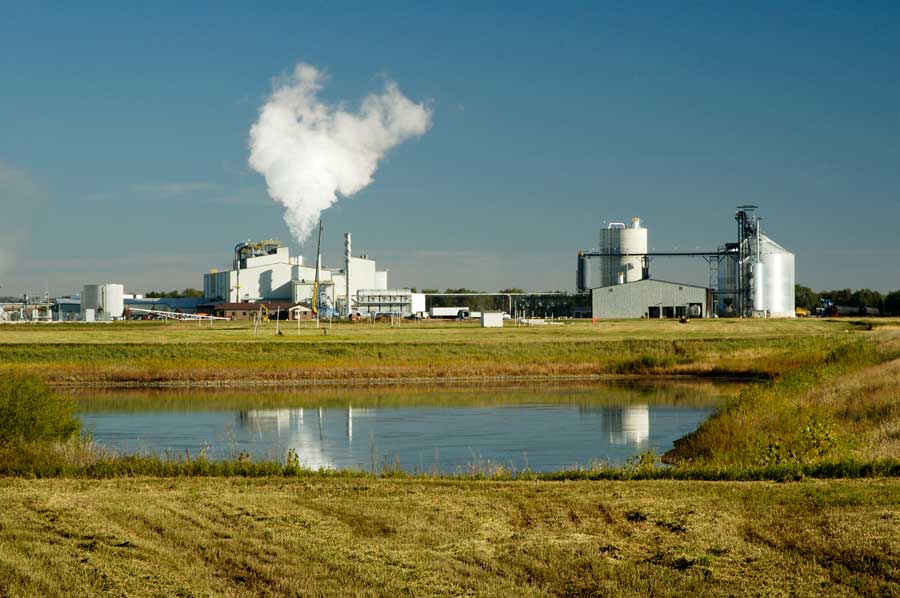
Would you drink wine made here?
Did you know that a 2013 study from France found traces of pesticides in 90% of wines sold in supermarkets?
And a lab test of 10 Californian wines found the weed-killer glyphosate in every single bottle (the World Health Organization recently determined that glyphosate, the main ingredient in RoundUp, may potentially promote cancer).
You can see why the alcohol industry fights tooth and nail to keep ingredients off of labels, spending as much as $30 million for lobbying last year.
You can also see why I go to such extreme lengths all to find a single bottle of wine.
Finding a wine that is truly “alive”… takes a little legwork…
That’s how I happened to find myself trapped in a truck… at night… in a flashflood all the way out on Argentina’s wild, northwestern frontier.
If you’ve had wine from Argentina before, it was probably from Mendoza.
Mendoza’s a nice place – five-star hotels, ultra-modern wineries with all the latest gadgetry… they even have paved roads!
500 miles to the north… lies a little valley, surrounded by miles of desert on one side and the jagged peaks of the Andes mountains on the other… a valley known as the Calchaquí…
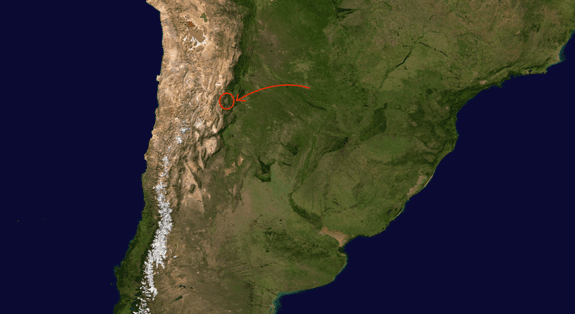
The Calchaquí Valley – The World’s Most Isolated Wine Region
Calchaquí wine is almost impossible to find here in America… you can’t even get it at the finest restaurant in Manhattan.
Entire vintages sell out in 24 hours to private lists of rich private buyers.
A single bottle – if you have to buy it retail – can go for over $500…
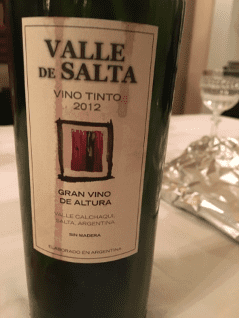
A rare bottle from the Calchaqui
When I popped my first bottle of this bold wine… I first got a hint of smoke… vanishingly short (the locals claim it comes from cattle drive campfires that so often burn out on the high plains nearby)
…then came the blackberry, the herbs, the leather… a hint of charred earth drifting across my palate… and an incredible, rugged mouthfeel.
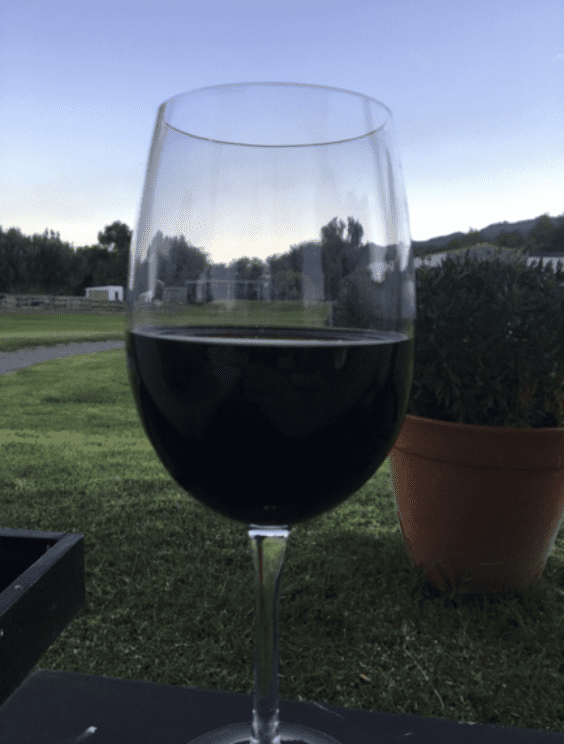
A deep, intense wine so dark it looks black
In that moment, I was instantly transported…
To a land where cowboys still sleep under the stars using their saddle bags as pillows
…where women work looms in the early dawn’s first light
…where the nearest city is six-hours away across a jagged mountain landscape
… where a small brotherhood of winemakers – operating at what feels like the edge of the earth – follow a tradition 200 years old…
If you enjoy wine… if you’d like to taste wine as it truly should taste… then you need to sample an extreme altitude wine from the Calchaquí…
In fact, with your permission I’d like to send a bottle straight to your door. No middle men. No inflated prices.
I’ll explain why I’m doing this in a moment… But first let me introduce you to the “wine from the end of the world”…
Wines from the Edge of the World
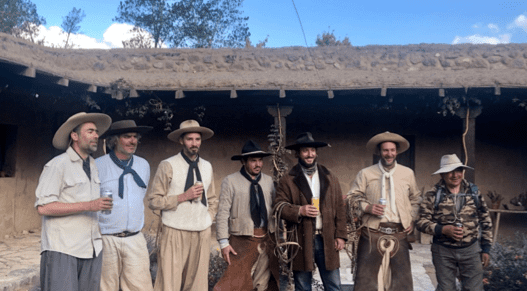
Argentina’s Northwest Frontier – The End of the World…
The Calchaquí is squeezed between miles of desert and the jagged peaks of the Andes Mountains…
After flying 5,000 miles to Buenos Aires… then another 500 miles to the small colonial town of Salta… you get in a 4×4 truck and begin your ascent into the mountains, reaching a plateau far above the clouds… then you continue into a vast desert…
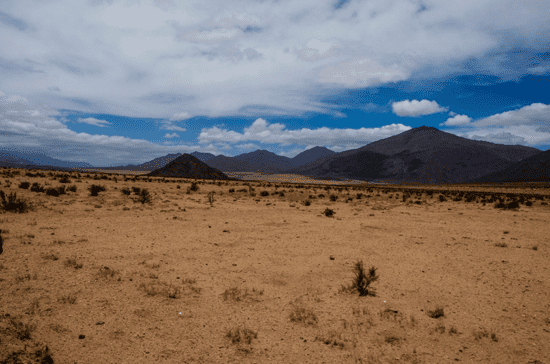
(where you’ll be glad to have a couple spare tires in the back)
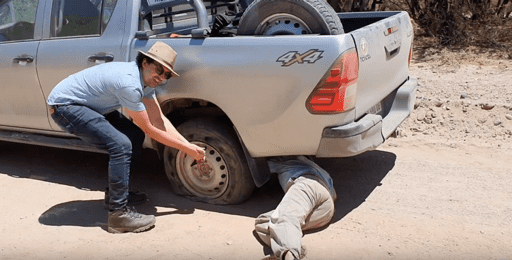
After six to eight hours, you finally reach the literal “end of the road”… the Calchaquí Valley.
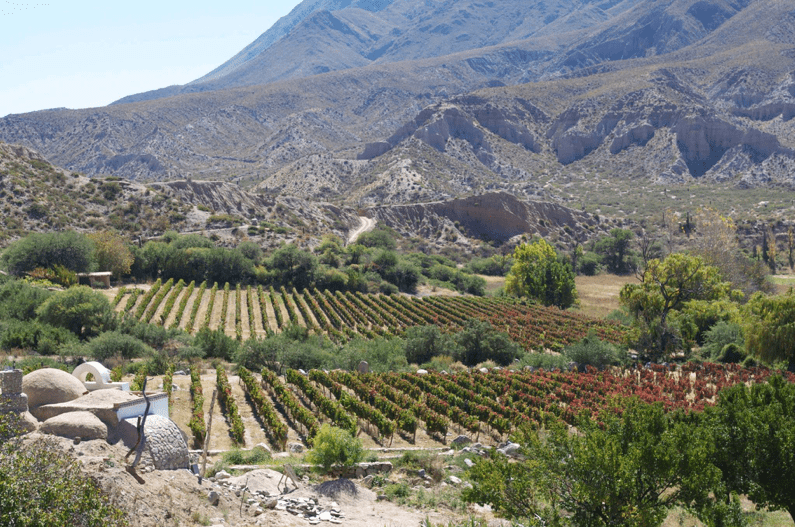
The Hidden Vineyards of the Calchaqui – 8,421 feet above the world
8,000 ft. Above the World, the Secret to a Great Wine
Journey through this vast landscape… and you’ll hear gale-force winds ripping through nearby poplar trees… before they nearly blow you off your horse…
You’ll find yourself suddenly short of breath in this thin atmosphere… (the locals claim the winds “drive away the oxygen”… and eventually you start to believe it!)
Despite the heat, you’ll wear long sleeves and pants… to protect from the intense UV rays (the sun here is 80% more intense than Bordeaux)
At night, you’ll add more layers as the temperature suddenly drops as much as 77 degrees!
Winemakers, they say, like their grapes to get a bit of challenge.
But here, they cling to the edge of survival.
Were they any other kind of grapes…they’d probably never make it…
Long Extinct in Europe, an Old Vine Lives on Here
Nearly two hundred years ago, a few brave souls carried malbec grapes across the Andes from a port in Chile.
A good thing too…because after malbec arrived in Argentina, all the European malbec got wiped out (along with most of Europe’s grapes) in an event called the “The Great Blight.”
In fact, the European wine industry was only able to recover by replanting with vines from America.
So when people talk about great French wines today… they’re not actually French at all! They’re American!
But the blight never touched the remote, isolated wineries of the Calchaquí. Today, the old French vines remain there today…much older than any you’ll find in Bordeaux.
30 years is considered old in most parts of the wine world… in the Calchaquí, a third of vines are older than 100 years…
In such an extreme environment, these “lost vines” yield a third of what they should…
…for making money, it’s a losing proposition…
…especially given the near-total lack of modern machinery and the fact that the nearest port is about 1,000 miles away…
But they also produce a one of a kind wine…
First time drinkers often note its inky, near-black color.
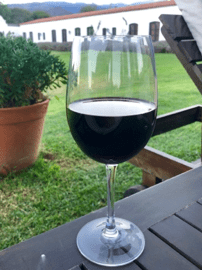
So opaque they call it ‘black wine’
That’s a tell-tale sign of extreme levels of resveratrol.
Here’s what we found when we had a certified lab test our extreme altitude malbec, Sunal Ilógico, against a common California red:
- ✓ 10 TIMES more resveratrol
- ✓ 93% less sugar
- ✓ 80% higher levels of anthocyanin (an antioxidant that lab and animal models suggest has a “anti-angiogenetic” effect, which is to say that it may inhibit tumor growth)
What Extreme Altitude Wine Does to Your Body
According to Harvard Professor David Sinclair, PhD, the chief benefit of resveratrol is NOT actually as an antioxidant.
Rather, resveratrol activates what’s known as the “sirtuin pathway.”
The “sirtuin pathway” in grape vines is essentially what allows the vine to survive the extreme conditions of the Calchaqui. It’s one of the principal longevity pathways found in most plants and animals.
When the plant comes under stress, it becomes flooded with resveratrol, which activates this “sirtuin pathway” and changes the plant from weakling to ultra-resilient survivor.
Human beings also have a surtuin pathway that works in the same way.
For instance, surtuins likely explain why fasting – which stresses the human body – appears to increase the human body.
So what does resveratrol have to do with our own sirtuin pathway?
Well, scientists now believe that resveratrol passes into YOUR body…and activates YOUR sirtuin pathway just as it did in the plant.
Effectively, the resilience and longevity of the plant – hard won after years in the wilderness – is passed onto you!
To quote Harvard professor David Sinclair, PhD: “if you stress a grape, you’ll get great wine…but you’ll also get a lot of resveratrol…when we ingest resveratrol, we get the same health benefits as the plant…we get the benefit of the plant stress as longevity.”
A Wine 200 Years in the Making
It’s a strange feeling when your car’s partway underwater and you’re still in it.
Especially when it’s pitch black.
Actually, it’s not a strange feeling at all. It’s panic.
A ways across the raging torrent – a wide, bone dry river bed just an hour before – a light flashed. Likely one of the vine workers with a flashlight.
He had probably seen the headlights sink beneath the water.
My brother gunned the engine, hoping for the best.
Then…a miracle. The front wheels caught on something – a log or a boulder? Just enough traction to propel the truck forward against the current on to a sandbank. An old man with a flashlight came running over the truck
The people of the Calchaquí don’t scare easily. After a lifetime up at the edge of civilization, their faces range to placid to imperturbable.
Yet, this old man’s face showed something almost close to alarm.
Vino? we asked.
Bueno… he replied.
Minutes later, we were sitting in an old gaucho bar way out on the frontier, uncorking a bottle.
Your Extreme Altitude Malbec (8,950 ft)
(No Filtration, Natural Fermentation)
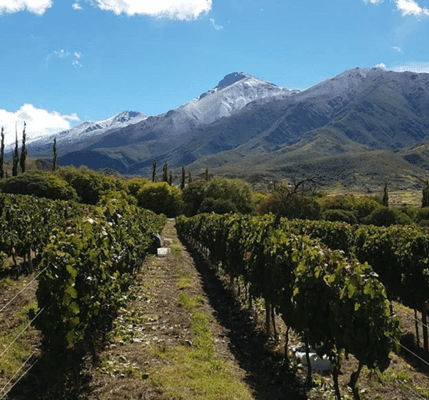
Perhaps the most isolated vineyard in all the Calchaquí is Luracatao. At 8,950 ft. above sea level, it sits on a northerly slope completely surrounded by mountains.
Nearby rocks soak up heat during, protecting the vines from freezing at night.
When winemaker Augustin Lanus used grapes from here to make wine for the first time… the inky color turned his stainless-steel vats red!
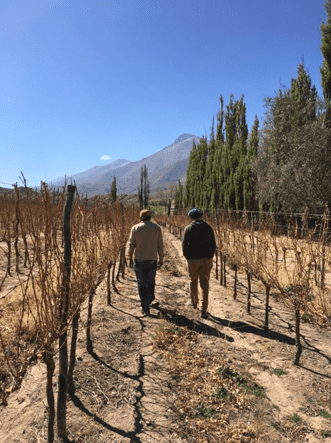
But it wasn’t just the rich color that surprised Augustin…
Smelling the wine, he found aromas of olive grove and graphite that you don’t tend to find in lower altitude malbecs.
On the palate, the fascinations just kept coming… cherry… black fruit… herbs… a touch of smoke… and even a dash of salt (ancient oceans that once covered this land millions of years ago)
He called the wine Sunal Ilógico…

A brilliant, intense wine
After England’s top sommelier, Phil Crozier, tasted Sunal, he wrote to Augustin: “Amazing wines and a great story. I was very inspired…”
During a blind tasting with legendary wine curator, Joaquin Aberdi, Sunal came in N.1 in its category.
And critic Mariano Obrega named Sunal Ilógico his “N. 1 of 2018,” noting its “freshness” and “pure intensity”
But it isn’t just the taste that makes Sunal so special…
It’s packed with antioxidants (as I said before, up to 10 TIMES more than other wines)
It’s also clean and pure…
Sunal is naturally fermented with ZERO filtration…
Also, high-altitude growing conditions have virtually zero pests and fungus. The higher you go, the less you need to coat your vines with antifungals and pesticides (as is necessary in wet regions like Bordeaux and Champagne).
Sunal is NOT available at your local supermarket or even that nearby fine wine shop.
Yet, I’d like to send a bottle of the Sunal Ilògico 2018 right to your doorstep.
Plus, I’ll also include five more bottles created in the shadow of the Andes Mountains… the best of what Argentine, traditional, small-batch winemaking has to offer.
Don’t worry – there’s no obligation for trying these wines.
And there’s no financial risk either… More on that in second… First, I want to tell you about the rest of the wines included in this fantastic collection of Argentine wines…
Your Bottle of Puramun Reserva Malbec 2016 (95 pts)
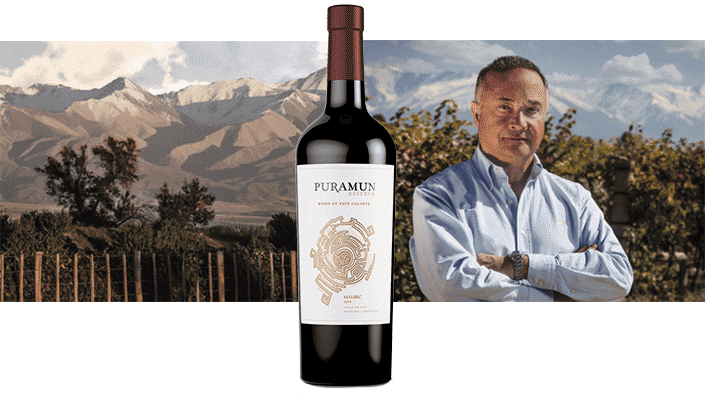
As it turned out, he was leaving to do something special: to handcraft his first personal, 100% family-owned wine, Puramun. (Only 4,000 cases a year.)
The wine has received rave reviews from Robert Parker’s Wine Advocate (92 pts) and wine competition judge Tim Atkin (95 pts), who praised its “elegant…subtle spices, well integrated oak and silky, palate-caressing tannins.”
Your Bottle of Valle de la Puerta Gran Reserva 2016

The ancient Incan valley of Famatina is nestled between Salta and Mendoza. Here, the La Puerta winery produces a big, yet approachable wine by blending Malbec (60%), Syrah (23%), and Bonarda (17%) – the three strongest grapes for Argentina’s soil.
The result is a smoky flavor with a touch of red berry. “Gran Reserva” means small batch production and high quality. The logo is an ancient glyph of a puma, sacred to “Diaguita” people who once warred with the Inca in these same fields.
Your Bottle of Casarena Cabernet Franc 2018 (92 pts)
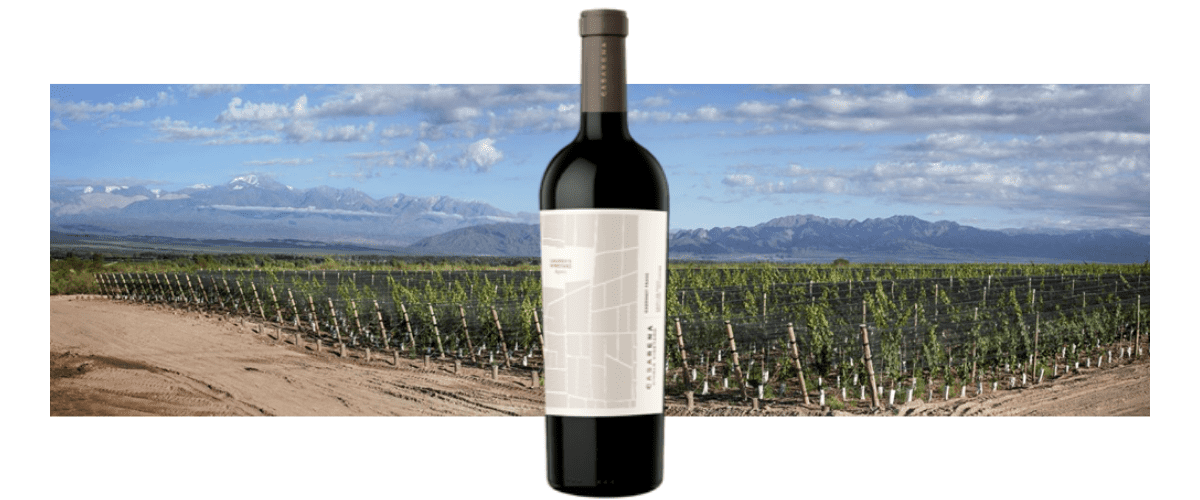
In 2007, a group of friends began restoring an old sandstone winery from the 1930s in Luján de Cuyo. By 2011, their wines were placing among the top 2% of vintages worldwide.
Agrelo is THE spot for cab franc in Argentina. Stick your nose in there for tell-tale cab franc aromas: black fruit and bell pepper. Then pour a glass to enjoy the unique, stony mouthfeel – think less plush Burgundian, more ‘high plains drifter.’ 92 pts (James Suckling), 92 pts (Tim Atkin).
Your Bottle of Anko Flor de Cardon Malbec 2018 (93 pts)
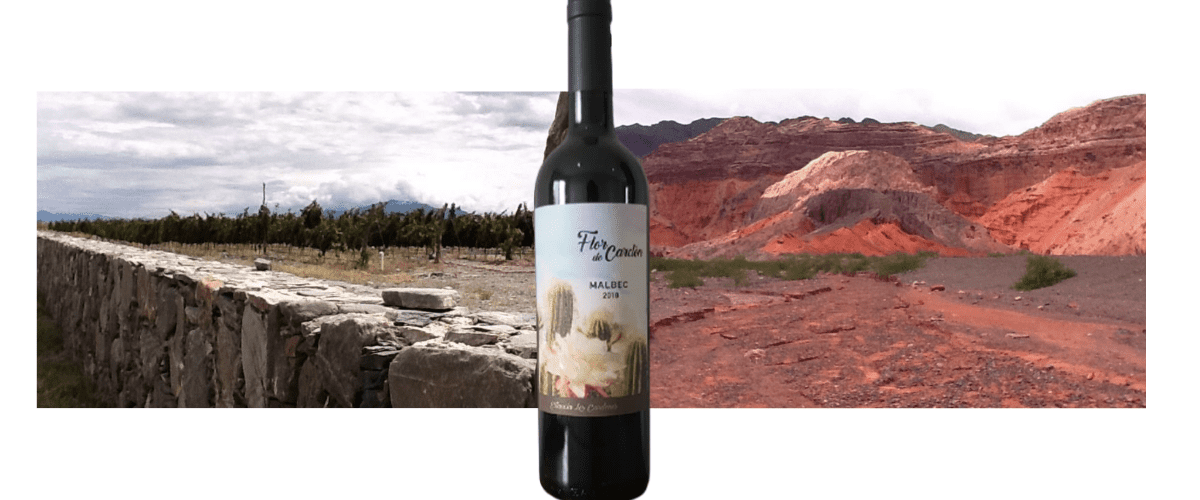
The vines of Anko grow in the shadow of giant cacti in the desert lands outside of Salta (the city nearest to the Calchaquí Valley). To quote Anko winemaker Jeff Mausbach, “Salta is a land of extremes – extreme beauty, extreme altitude, extreme sunlight. These extremes make for a singular expression of malbec – powerful, structured wines with a savory minerality that is very different from other regions in Argentina.”
This is an extremely small batch wine – 1,000 cases only. You’re going to taste the desert – a product of the crushed mica in the razor-thin topsoil. This malbec is also a consistent 90+ winner, receiving rave reviews from James Suckling (93 pts) and Wine Spectator (92 pts), who praised its “creamy midpalate, with a long, intense finish.”
Your Bottle of Luca Pinot Noir 2018 (94 pts)

Luca Vineyards made history as the first to plant Pinot Noir at over 4,500 feet – the highest elevations in Mendoza for these varietals. Located in Gualtallary, they called the vineyard the G-Lot.
This wine’s Burgundian style makes it one of Argentina’s leading and highest-regarded Pinots.
Beautiful garnet color with aromas of wild strawberries, saddle leather and cola root. A complex Pinot with notes of leather, spice, and cherry confiture on the palate. Pairs well with foods such as lamb chops, grilled salmon, roasted duck or chicken and game birds. 94 pts (James Suckling), 92 pts (Wine Advocate).
6 Bottles of Dark Red Wines…
(including the 8,950 ft. Sunal 2018)…
Shipped (free) Right To Your Doorstep…

You might assume these bottles are expensive…
Not at all… for the simple reason that we don’t pay retail… and neither will you.
Americans have been trained to think that a good wine must be more expensive.
But that’s simply not the case.
Let’s say a bottle costs $100… how much of that $100 is actually paying the wine?
About $20. That’s it.
The rest? Marketing costs and the dreaded “3-tier system”… a legal framework left over from Prohibition that basically guarantees three levels of mark-up (not including taxes) on any bottle you buy in the US.
I’m able to bypass that system.. it’s one of the many perks I enjoy as head of America’s only wine partnership, called The Bonner Private Wine Partnership.
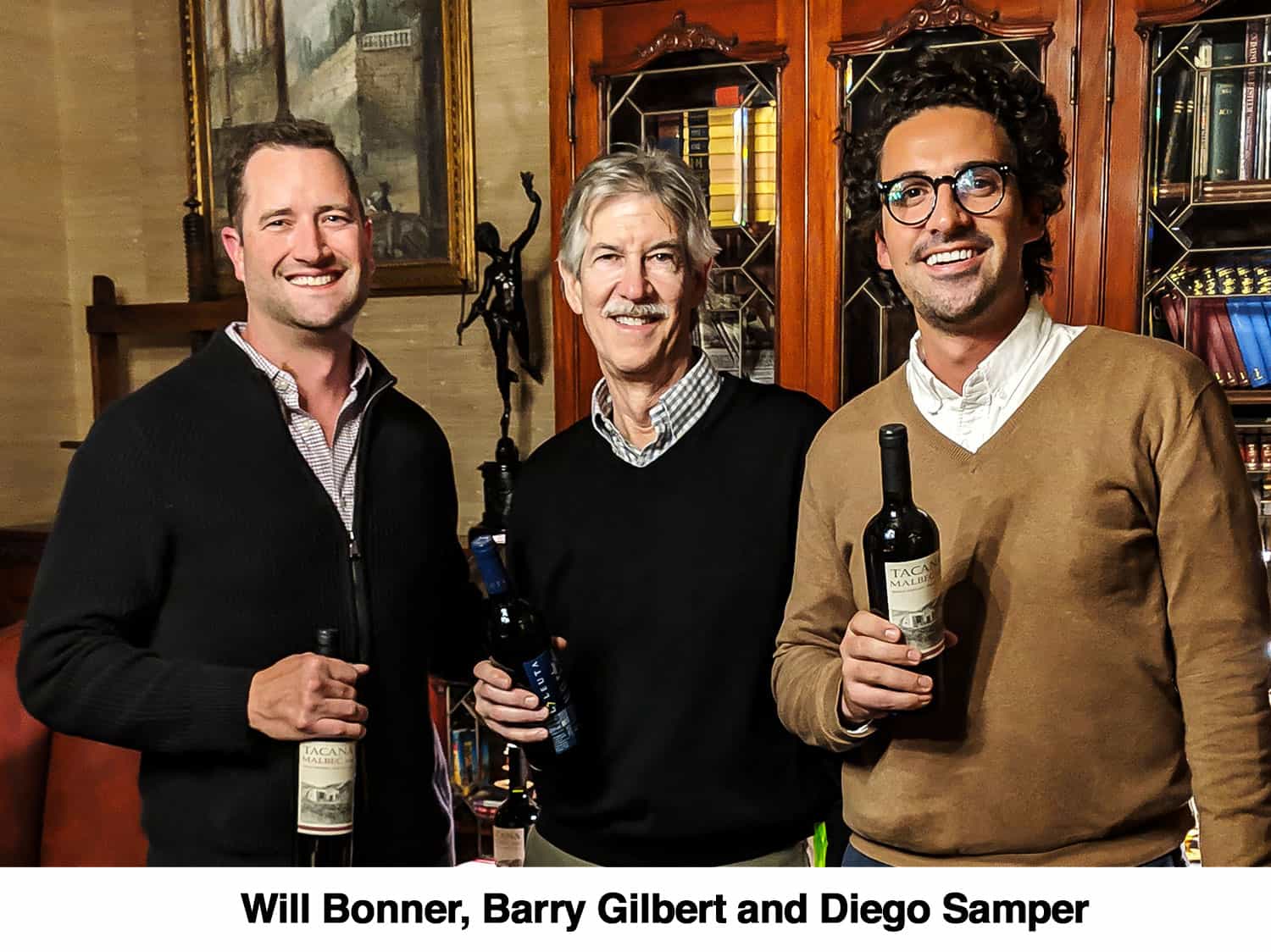
We’re a private group of wine lovers who source seldom-imported foreign wines directly… without the usual middlemen, bad wine, or inflated pricing.
All year round, Diego, Barry, and me scour the globe for great wine, making deals directly with vineyards… mostly small batch places just like Sunal…
And that brings me to the wines I’d like to send to your doorstep today.

Your high altitude bottle of 2019 Sunal Ilógico (8,950 ft)… your bottle of 2016 Puramun Reserva, from Argentina’s top winemaker Pepe Galante (95 pts)… your bottle of 2018 Valle de la Puerta Gran Reserva, from the ancient Famatina Valley… your bottle of Casarena Cabernet Franc 2018 from the top spot for cab franc in Argentina… your bottle of Anko Flor de Cardon (93 pts) from the winemaker behind Bill Bonner’s Tacana… and your bottle of Luca Pinot Noir 2019 (94 pts).
And there’s something else I want to give you today, too.
While you wait for your collection, you’ll receive two special, exclusive e-books, written especially for club members by top international sommelier, Nigel Tollerman.
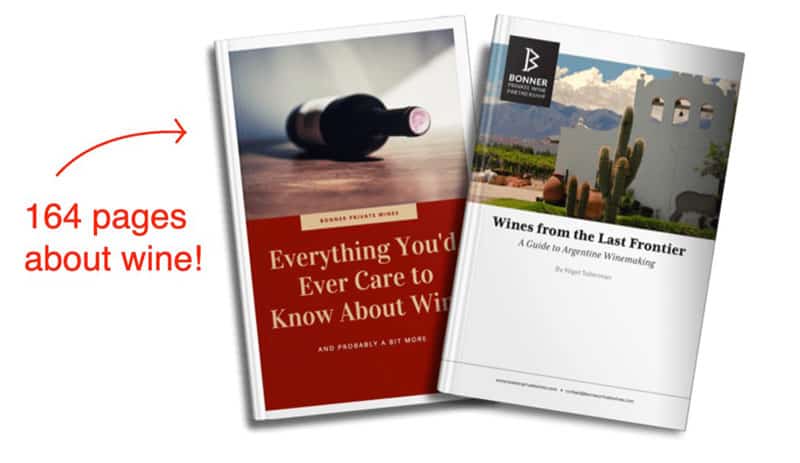
Nigel is a certified sommelier from Argentina’s top Escuela Argentina de Sommeliers. He has appeared on the Food Network and National Geographic.
I think you’ll find these e-books both fun to read and highly educating…
As a fellow wine adventurer, they’re yours FREE to read and access the instant you sign up…
You’ll also receive a tasting video with veteran Bordeaux winemaker Julien Miquel.
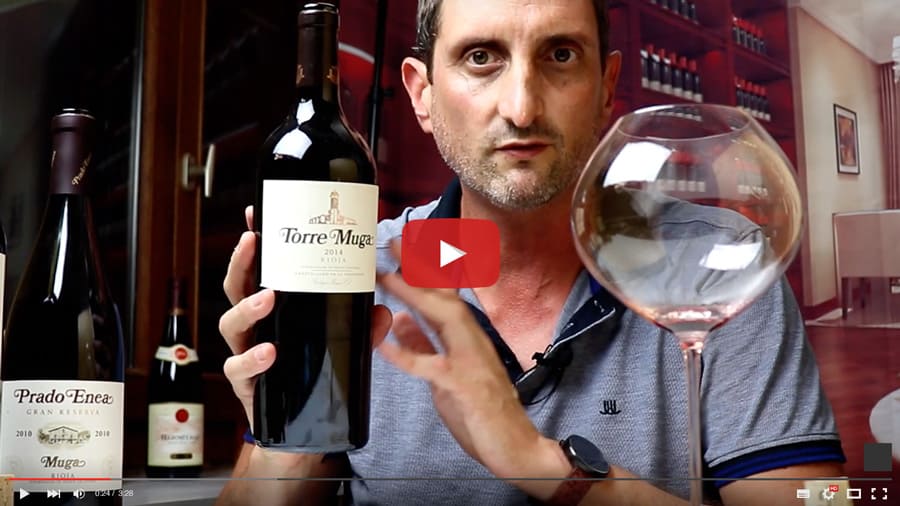
Julien has made wines all over the world, including at Chateau Margaux, perhaps the most famous winery in France.
He’ll take you through a virtual tasting for three of your wines making you an expert in Argentine wine by the time your bottles arrive.
Okay, so how much is a quarterly membership to the Bonner Private Wine Partnership going to cost?
Well, as I said earlier, a single case of Calchaquí wine goes for $450… and they sell out an entire vintage in less than 24 hours…
And I’ve seen bottles of a certain high-altitude wine being sold for as much as $598 for a single bottle (that would be over $3,000 for a collection of six!)…
(which is crazy because that certain wine actually has lower point scores than other bottles included in your collection)
But you won’t spend several thousand dollars here… you won’t pay $450… or even $300…
You’ll pay just $199 for your first quarter with the club (shipping is on us!)
Your 100% Money Back Guarantee
(and no, you don’t have to send back the wine)
If you don’t love your Argentine wines, you have 30 days to request a refund.
And you don’t even have to send the remaining bottles back.
Yes, you could drink every single bottle and ask for a refund. There’s no way we’d be able to tell.
But we’re confident that you’ll love what you get and want to stick around for more!
After your $199 introductory shipment, subsequent shipments will be billed at our normal fee of $249… but there is NO obligation. We will let you know when your bottles are ready to ship and you can cancel at any time!
So…interested in sampling great wine at zero risk?
Well if you’re still reading, I’m going to take a wild guess that the answer is “YES!”
Simply click in the BIG ORANGE BUTTON to get started…
What Our Members Say About Our Wines!
This is your chance to be among the first Americans to reserve your own supply of rare high-altitude wine.
Place your order below. You’ll receive an email confirmation with shipping information and links to your materials.

This is a risk-free offer. You have 30 days to request a full refund. And don’t worry about returning the wine! Each shipment is billed separately. Subsequent shipments will be billed at our regular rate of $249. But there’s no obligation. For subsequent shipments we will also offer 100% refund but the wines must be returned with corks intact. Otherwise, we can only offer a 50% refund. But there’s no need to receive wines you don’t want. We’ll let you know when we’re preparing your shipment and you can always give us a call to cancel. You truly risk nothing by accepting this offer today.
Simply Enter Your Information
(Your $50 Discount & Complimentary Shipping Are Applied Below!)

✅ Your Bottle of Sunal Ilógico Malbec 2018 – The Exclusive 8,950 ft. Malbec from Argentina’s Remote Salta Valley
✅ Your Bottle of Puramun Reserva Malbec 2016 (92 pts) – From Pepe Galante, Argentina’s top winemaker
✅ Your Bottle of Valle de la Puerta Gran Reserva Malbec 2018 – From the Ancient Famatina Valley
✅ Your Bottle of Casarena Cabernet Franc 2018 – From the top spot for cab franc in Argentina
✅ Your Bottle of Akko Flor de Cardon 2018 (93 pts) – The “Mile High” Malbec
✅ Your Bottle of Luca Pinot Noir 2019 (94 pts) – From the first Pinot Noir vineyard over 4,500 ft.
About the Bonner Private Wine Partnership
Founded by Will Bonner, the Partnership is a group of wine lovers who come together to import great, small batch wines that might otherwise get overlooked by large importers.
No middle men. No additive-packed supermarket wines. No inflated costs.
WE CANNOT SHIP TO THESE STATES:
Alabama, Alaska, Arkansas, Delaware, Hawaii, Indiana, Kentucky, Mississippi, Utah
If you live in one of these states, you’ll need to select an alternative delivery destination.
Please be aware: We cannot deliver to P.O. boxes.
An adult signature is required for all shipments of alcohol.
A note about our Satisfaction Guarantee: Wines, sadly, are not like power tools. A hardware store can always resell a hammer you used a couple times. Not so for a bottle of wine. Once you pop the cork, it’s a total loss to us. For that reason, we cannot offer full refunds on these offers. But don’t worry, if the wine arrives and there’s something wrong with it, just give us a call and we’ll do what we can to make it right. As a Bonner Private Wine Partnership member, your satisfaction is all-important to us.
All sales on this site are processed and managed by WineVIP, a California Licensed Retailer.
PRIVACY POLICY TERMS & CONDITIONS
ALL RIGHTS RESERVED, BONNER PRIVATE WINES 2022
